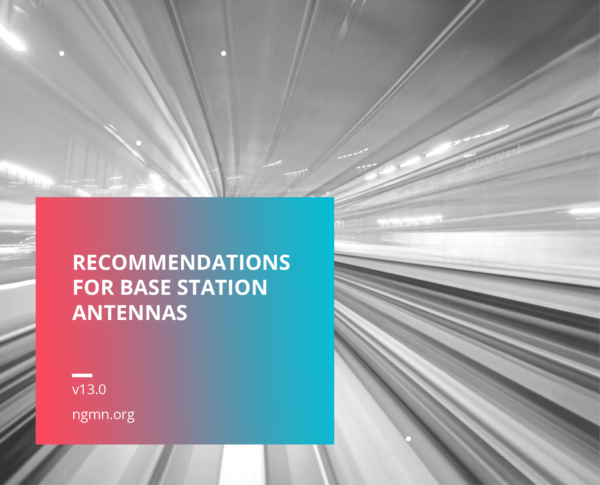
NGMN unveils common language for base station antennas – A milestone toward simplified mobile network deployment
Dusseldorf, Germany, 09 July 2025 – The procurement, testing and deployment of base station antennas – a critical component in the delivery of mobile communications – will be simpler for operators and suppliers thanks to new guidance for the creation of a ‘common language’ to describe the technology.
For the first time, the mobile industry has been provided with a single document that sets shared rules for describing passive, active and hybrid base station systems, thanks to the latest release of the NGMN Alliance’s ‘Recommendations for Base Station Antennas’ publication. This represents an important step forward as the industry moves towards hybrid antenna systems, which combine active and passive technologies to deliver mobile communications solutions, such as 5G, in a more versatile and efficient way.
“Mobile networks rely on base station antennas to deliver high quality mobile services to consumers and businesses,“ said NGMN Chairman and Orange Group CTO and EVP Networks Laurent Leboucher. “Through this guidance we continue to enable the industry to have a common language to plan, build, operate and maintain critical antenna infrastructure in networks throughout the world.”
The publication, led by NGMN’s BASTA (Base Station Antenna Architecture) project, empowers vendors and operators to more easily share technical information about antenna systems using similar parameters and formats. This makes it easier for operators to evaluate different antennas and thereby facilitates the planning and design of networks. It also helps network engineers to efficiently communicate in later stages in the lifecycle of the antenna systems such as in network operations and maintenance.
“As antenna technology continues to evolve, it is more important than ever to work closely with our partners and the wider industry to ensure we can efficiently adopt these systems in our networks,“ said NGMN Board Director and TIM’s Head of Technology Evolution and Innovation Andrea Calvi. “NGMN’s Base Station Antenna Project (BASTA) has provided the platform for us and our partners to collaborate and agree on the technical parameters that describe modern base station antenna systems” he continued.
The latest release of ‘Recommendations for Base Station Antennas’ is a detailed technical document that defines parameters that describe the electrical, mechanical and Radio Frequency (RF) characteristics of the antenna system. The document is also supported by XML files that allow the digital exchange of antenna datasheets.
“Having a common language to describe antennas enables operators and manufacturers alike to save costs and reduce time to market when deploying new antenna infrastructure,” said NGMN CEO Anita Doehler. “These savings are directly attributable to the collaboration enabled by active participation of our membership in NGMN Alliance’s projects”, she added.
The BASTA project team plans to maintain and develop the publication through future versions that will develop the parameter set to continue to align with new antenna technologies. Possible areas for future focus include defining and reporting antenna sustainability parameters (e.g. energy efficiency, carbon footprint etc). NGMN strongly encourages all MNOs and antenna systems vendors to join NGMN and participate in this project. Collaboration is key to driving the industry’s most important topics such as NGMN’s strategic pillars: Operating Disaggregated Networks, Green Future Networks, and 6G. NGMN therefore invites all parties across the entire value chain to join the Alliance in this important endeavour.
The publication can be downloaded here.
Further information and all NGMN publications can be found on the website at ngmn.org.

